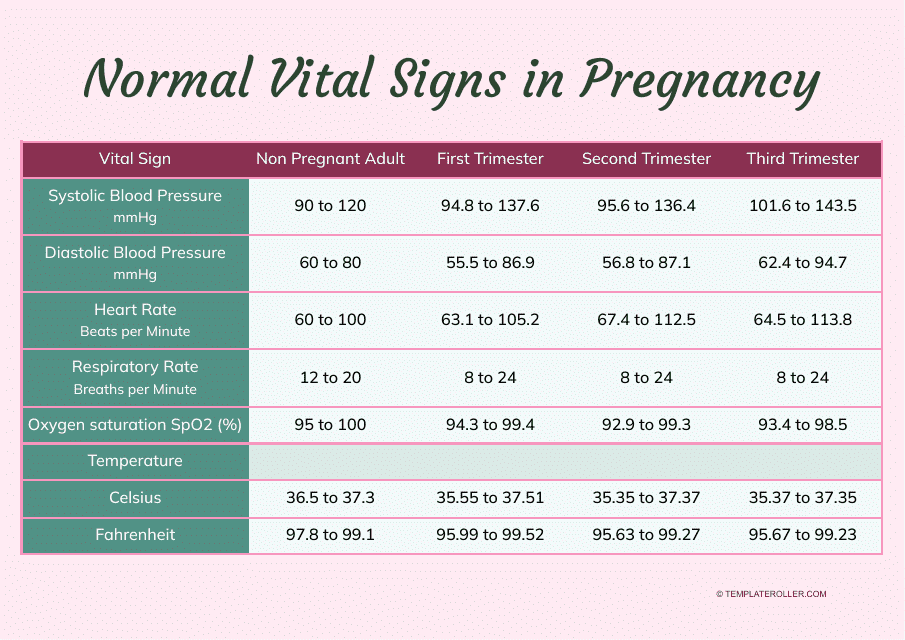Free Pregnancy Resting Heart Rate Chart Templates
Pregnancy Resting Heart Rate Chart: What Is It?
A Pregnancy Resting Heart Rate Chart outlines the normal pregnancy resting heart rate which should be crucially monitored during a pregnancy. This is because a fetus needs enough blood circulation to receive the necessary nutrients to grow and develop properly whilst growing within the womb of the mother.
The resting heart rate during pregnancy will differ from the resting heart rate of a non-pregnant person and the resting heart rate will also differ across various stages of the pregnancy. For instance, when a woman is in the final trimester of pregnancy, she can experience a twenty to twenty-five percent rise in heart rate (from the average).
Monitoring the heart rate throughout the whole pregnancy is important as a low heart rate could indicate an inadequate supply of nutrients whilst a high heart rate could also be harmful to the fetus. Therefore, pregnant women are often advised to take measurements at home, and by using a Pregnancy Resting Heart Rate Chart, they can reference their measurements to the normal resting heart rate during pregnancy and make decisions about the need to see a doctor, if their measurements deviate from the norm considerably.
For a full list of Pregnancy Resting Heart Rate Chart templates please feel free to check out our library below.
What Is a Normal Resting Heart Rate for Pregnancy?
A female's heart has to function much more when she is pregnant due to the fact that there is an increased requirement for more blood to be pumped to the womb when the fetus develops.
- The flow of blood that the heart delivers rises by a third to a half during pregnancy with the heart rate increasing from seventy bpm (which is the average heart rate before pregnancy) to around ninety bpm during the pregnant resting phase. This is considered completely normal and should not be a cause for concern;
- However, if the heart rate produces a reading over 100 then it could be a good idea to let a healthcare professional know;
- If the heart rate exceeds 140 bpm then this could be dangerous and a doctor should be contacted immediately.
It may also be wise to keep a recording of heart rate readings throughout the day to see if there are any big fluctuations. You should also make a recording of any activities that were carried out prior to the measurement to get an accurate picture of what could have impacted the results. Perhaps you did some exercise or got stressed just before – make a note of this as it could help you or a doctor to see what impact exercise and stress has on your body.
After birth, the heart rate of the mother will stabilize and return to the normal heart rate that the mother had before her pregnancy. This usually takes just under 2 months to occur so do not be alarmed if one month on from the birth, your heart rate appears a little too high.
Still looking for a particular template? Take a look at the related templates below:



